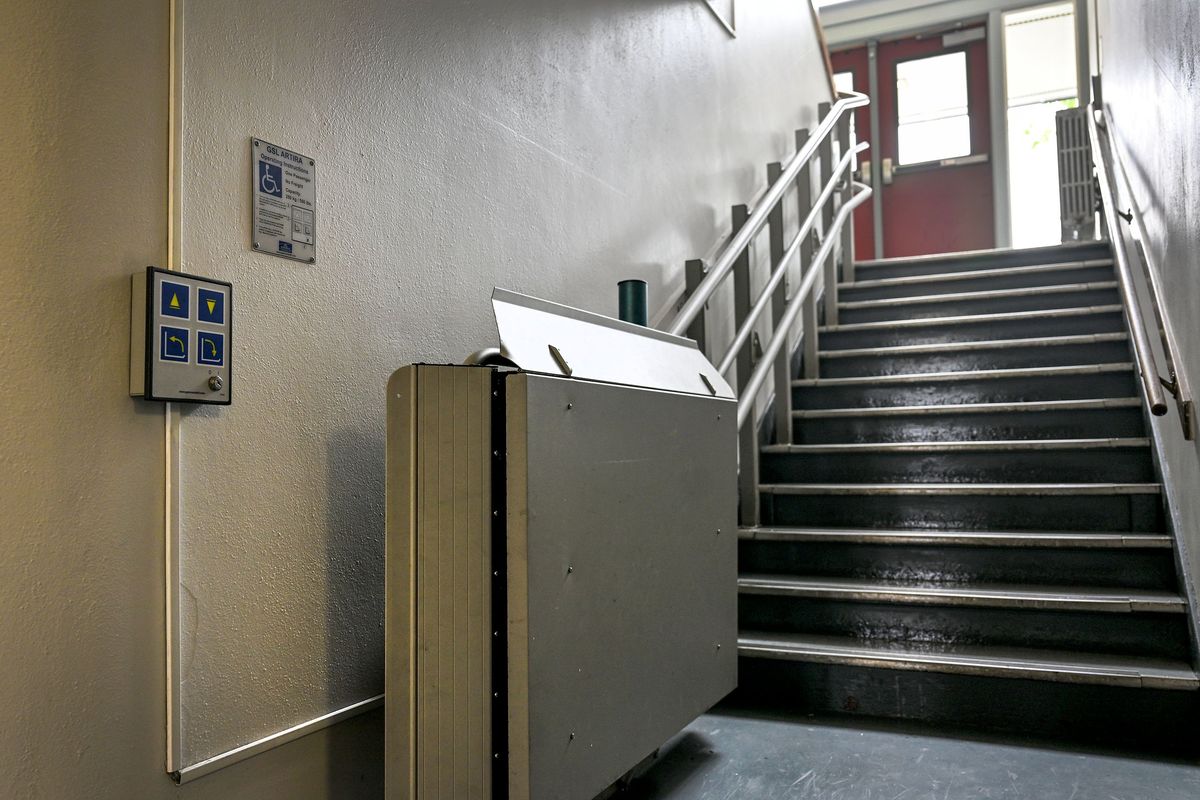West Valley weighs whether to ask voters for bond to address aging schools

Dozens of people on a West Valley School District committee have recommended the school board ask voters for a bond to pay for replacing three schools and doing improvements to several others.
The facility planning committee met for more than a year and visited each building in the district to learn the condition of each site and what improvements, if any, were needed. They also visited new and recently remodeled schools in the Central Valley School District and Spokane Public Schools to compare. The committee included teachers, students, parents, administrators, community members and business representatives.
What they found in West Valley were schools with “antiquated” HVAC systems that did not include air conditioning, cramped classrooms, a popular alternative high school housed in an old bank that was never designed to be a school, failing brickwork and parking lots that lead to daily traffic backups.
The board is expected to decide in October whether to put a bond on the February 2024 ballot and, if so, for how much. Until then the board is considering the five key projects recommended by the committee: replacing Centennial Middle School; moving kindergarten classes back to neighborhood schools; replacing City School, a non-traditional experiential school for grades 5-8; replacing Spokane Valley High School, an alternative high school; and completing several district-wide improvements.
The state uses a scoring system to rate the condition of schools with many schools falling in the fair range, which is between 65 and 90. Most of the schools in the district rated in the 80’s, said architect Randy Wilson of NAC Architecture. “Most buildings are in the fair zone, especially if they’ve been around a while,” Wilson said.
However, Centennial Middle School rated only a 67.5, which is considered poor condition. City School, housed in a building more than 100 years old, rated a 71.5.
Centennial Middle School hasn’t been altered since 1988, when a new classroom wing and a second gym were added. Its mechanical systems are outdated. “There’s parts of it that are an absolute nightmare,” Wilson said. “The circulation is convoluted.”
Words like cavernous and cavelike have been used to describe the school, as well as unwelcoming. Students have nowhere to gather except the gym and cafeteria. Most new schools are designed with welcoming spaces for students to sit with their friends.
The committee considered simply remodeling the middle school, but the district doesn’t have any empty buildings or classrooms where students could meet during construction, said Superintendent Kyle Rydell. “We don’t have open facilities,” he said.
Additionally, the estimated cost to renovate the school is nearly the same as the estimated cost to build a new one, Rydell said. “Modernizing wasn’t really an option,” he said.
Unlike other schools, the City School entrance is a split level and there is no office right where people enter the building. The doors are kept locked and there is a camera so office staff can see who enters. “All of our schools have a single point of entry, but at City School they have to wait outside,” said West Valley Maintenance and Custodial Director George Castor.
The school gym roof is failing and has to be shoveled after every snowfall so it won’t collapse. The brick façade on the building is falling apart. “There’s just a pretty long list of things,” Wilson said. “The cost of modifying that building would exceed the cost to replace it.”
The upper level of the school has no ADA accessible bathrooms and the classrooms on the first floor are tiny and chopped up, Wilson said. “They make do with what’s there,” he said.
Spokane Valley High School is in a building that used to house a credit union and a bank. There’s no gymnasium and the cafeteria is small. There’s so little space that the district had to stop accepting new students. Enrollment is capped at 250 and there is a waiting list. Rydell said he worries about the school “dying on the vine.”
“It’s at its ceiling,” he said. “That building is going to continue to deteriorate.”
A survey completed in April showed a high degree of interest in improving Spokane Valley High School, Rydell said. However, the district isn’t really interested in renovating the building at its current location, which is in a high crime area next to a Motel 6. A suggestion that came out of the committee is to construct a new building for the high school at the same location as City School, Rydell said.
Of all the projects on the list, the one that isn’t optional is moving kindergarten classes into the neighborhood schools. The district’s preschool program is currently in leased space owned by St. Paschal’s Catholic Church. The district has already been notified that their lease won’t be renewed when it expires in 2025.
The preschool program used to be housed in what is now the Kindergarten Center. The plan is to bring the preschool back to the Kindergarten Center and then put the kindergarten students into their neighborhood elementary schools, Rydell said.
The fifth category for the bond is district-wide improvements, which includes replacing manual sprinklers still in use at some schools with automated sprinkler systems. Two elementary schools, Orchard Center and Seth Woodard, would get parking lot improvements that will help eliminate traffic backlogs while parents pick up and drop off their children. Similar improvements have already been completed at the Ness and Pasadena elementary schools.
The category also includes improvements to the district office, including adding some office space and making the bathrooms ADA accessible.
West Valley typically only seeks a bond every 20 years, Rydell said. The most recent bond, which voters approved in 2003, paid to build a new West Valley High School. “We don’t run them very often,” he said. “This is huge for us. The board has been presented with the options from the committee. Now it’s up to the board.”